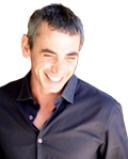Psychedelic-Assisted Therapy
The Psychedelic Renaissance: The Drugs Are Back, And They Mean Business This Time!
Could Psychedelics (like LSD) Be The Future of Medicine?
Posted January 5, 2011
Psychedelics are back!
For the first time in 40 years, without resistance from the law, in countries all over the world and cities all over America, some of the most infamous substances in history are again being put to the test. Scientists in Israel, Jordan and Canada are looking at the therapeutic potential of MDMA. In Brazil, Germany and Spain, researchers have begun untangling ayahuasca, a plant that contains DMT-arguably the most potent hallucinogen on earth. In Switzerland, LSD is being used as a treatment for end-of-life anxiety. In Mexico and Canada it's ibogaine (another powerful plant--derived psychedelic) for opiate addiction. Here at home, scientists at Johns Hopkins have concluded a long-term psilocybin study that examined the purported "mystical experience" people have while hallucinating. At UCLA researchers have completed an end-of-life-anxiety-psilocybin study, and teams at NYU and Johns Hopkins are beginning studies of their own. At the University of Arizona it's psilocybin as a treatment for obsessive--compulsive disorder. Researchers at Harvard have finished neuro-toxicity studies on MDMA and peyote, plus LSD for cluster headaches and MDMA for end-of-life anxiety. In South Carolina researchers working with combat veterans returning from Iraq and Afghanistan, among other trauma victims, have completed one study of MDMA as a treatment for post--traumatic stress disorder and are about to begin another. And that's just the beginning....
What follows is an article I wrote last April for Playboy (which is only coming on-line now) on the subject. The story is technically about the rebirth of psychedelic medicine, but it's mostly the tale of a very brave woman named Mara Howell and her quest to find God in the final days of her life.
The room where they wait is a long rectangle. The floor is covered in thick green carpeting, so everyone calls it the "green room." One wall of the green room is covered in books, the other three in paintings. In the center of the high ceiling is an old floral medallion-once the anchor point for a massive Victorian chandelier. When Mara Howell lies in bed she looks straight up at it. The flowers are braided into a wreath, and maybe it's all that Victorian ornamentation distorting the image, or maybe the design was intentional, but either way, the results look less botanical than celestial. The flowers look like angels. Mara hopes they are angels of mercy.
Marilyn Howell, Mara's mother, and Lindsay Corliss, Mara's close friend, are also waiting in the green room. Lindsay is nervously tidying up; Marilyn is just nervous. She walks to the window, glances into the street again and wonders, Where the hell is Allan? She doesn't know much about Allan-though she knows he's late and she knows that's not his real name. Allan is an underground therapist of sorts, and the work he does, what he calls "his crimes of compassion," remains very much illegal.
It took Marilyn some serious effort to even drum up his phone number. Then there were the meetings. At the first meeting Marilyn had several hundred questions, but Allan had several hundred answers. His knowledge was impressive, as was his willingness to take great risks for perfect strangers. Marilyn liked him immediately, which was a good thing because there were no other options.
Mara was 32 when doctors diagnosed her with colon cancer. That was a little more than a year ago, and it was an unusual diagnosis. The disease typically strikes the elderly-from 2002 to 2006 the median age was 71. On top of that, Mara is, to all who know her, "vibrant." She rarely drinks, doesn't do drugs, eats right, sleeps well, is ridiculously optimistic, always battles her weight but gets plenty of exercise. A month before her first major surgery she had been in Honduras gathering data on fish populations and earning a master scuba diver certification.
In the past year Mara has tried all the traditional drugs and all the alternative therapies. Wow, has she tried all the alternative therapies-massage, macrobiotics, Chinese herbs, Tibetan herbs, acupuncture, acupressure, the Feldenkrais Method, chiropractic realignment, the power of prayer. At a Catholic mass in Boston the priest read from the pulpit, "Blessed Virgin Mary, please intercede to heal Mara Howell." Jews at the Aquarian Minyan in Berkeley chanted "Mi sheberakh avoteinu," while Buddhists in Hollywood tried "Nam-myoho-renge-kyo." Twice Mara went to Brazil to meet the famed faith healer John of God. John of God has purportedly healed millions of people. But he couldn't heal Mara.
About five weeks earlier Mara was forced to leave her apartment in Oakland for the home in which she grew up. So the green room, which was really the front room of her mother Marilyn's Boston home, was converted into a sick ward.
Marilyn had heard rumors of Allan and the particular work he does, but broaching the subject with her daughter was not easy. The treatment is not only radical and illegal but also geared toward helping patients confront what's politely called "end-of-life anxiety" and known to most as "mortal terror." Mara's reaction was hostile. "I'm not interested in discussing end-of-life issues," she snapped. "Who told you about this? How could they be so insensitive?" Then she thought it through. She knew she needed a miracle, and this treatment, unlike all the others, had a history of spiritual -transformation-that is, she also knew, if it didn't kill her first.
Allan is an underground psychedelic therapist. Psychedelic therapy is built on the 1960s idea that psychedelic drugs-such as LSD and psilocybin (the "magic" in magic mushrooms), which are known to radically alter cognition and perception-also have the ability to produce profound insight at low doses and cathartic, life-changing experiences at high doses. Psychedelic therapists not only provide these drugs but also act as guides throughout the journey.
The drug Allan is considering for the first session is MDMA, known on the street as ecstasy and a latecomer to the psychedelic tool kit. First synthesized by German pharmaceutical company Merck in 1912, MDMA didn't hit the therapeutic world until the mid-1970s, when pharmacologist Alexander Shulgin heard from his students that it helped one of them get over a stutter. Shulgin dosed himself, reporting "altered states of consciousness with emotional and sexual overtones." He also noticed the drug "opened people up, both to other people and to inner thoughts." Ecstasy was criminalized in 1985 but not before it had been introduced to thousands of therapists.
Because Allan and Marilyn don't want to compromise Mara's palliative care, the MDMA will have to be administered in addition to all her other medications, and this is where the danger lies. Chemically, MDMA is an amphetamine. Because amphetamines increase heart rate and blood pressure and because Mara is already suffering palpitations, there's a chance of inducing a heart attack. Neurotoxicity is another concern. A third problem is diminishing her emotional and physical reserves, triggering a slide from which there would be no return. But the greatest threat is ignorance. Allan consulted outside doctors. It's dicey, they said, but doable. Marilyn and Allan decide on a low starter dose. Mara agrees to roll the dice. That was two days ago.
Today, the doorbell rings. Allan and that starter dose have arrived. Mara is excited. Lindsay is hopeful. Marilyn thinks she may throw up. Her mind won't stop racing. This starter dose is just a best guess, right? Can she even trust Allan? But Allan is buoyant, gloriously optimistic, not patronizing like other therapists Mara has met. His demeanor calms everyone. As he walks into the room Allan takes the pills from his pocket and holds them up.
"We are going to have an adventure," he says.
And he is not lying.
The whole piece is online here!
Or, if you want to see a pdf of the story, try here.




